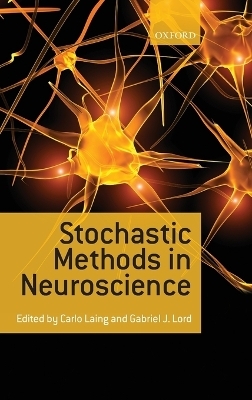
Stochastic Methods in Neuroscience
Oxford University Press (Verlag)
978-0-19-923507-0 (ISBN)
Great interest is now being shown in computational and mathematical neuroscience, fuelled in part by the rise in computing power, the ability to record large amounts of neurophysiological data, and advances in stochastic analysis. These techniques are leading to biophysically more realistic models. It has also become clear that both neuroscientists and mathematicians profit from collaborations in this exciting research area.
Graduates and researchers in computational neuroscience and stochastic systems, and neuroscientists seeking to learn more about recent advances in the modelling and analysis of noisy neural systems, will benefit from this comprehensive overview. The series of self-contained chapters, each written by experts in their field, covers key topics such as: Markov chain models for ion channel release; stochastically forced single neurons and populations of neurons; statistical methods for parameter estimation; and the numerical approximation of these stochastic models.
Each chapter gives an overview of a particular topic, including its history, important results in the area, and future challenges, and the text comes complete with a jargon-busting index of acronyms to allow readers to familiarize themselves with the language used.
Carlo Laing obtained his PhD in applied mathematics from the University of Cambridge. After post-doctoral positions in the UK, USA and Canada, he joined Massey University in Auckland, New Zealand, where he is currently a senior lecturer. His interests include nonlinear dynamical systems, particularly as applied in computational neuroscience. Gabriel Lord obtained his PhD from the University of Bath, UK. After a post-doctoral position at the University of Bristol and working for a time in industry he joined Heriot-Watt University in Edinburgh, UK. His research interests are in applied computational analysis, stochastic numerics and applications from computational neuroscience.
PREFACE ; NOMENCLATURE ; 1. A brief introduction to some basic stochastic processes ; 2. Markov chain models of ion channels and calcium release sites ; 3. Stochastic dynamic bifurcations and excitability ; 4. Neural coherence and stochastic resonance ; 5. Noisy oscillators ; 6. The role of variablity in populations of spiking neuons ; 7. Population density methods in large-scale neural network modelling ; 8. A population density model of the driven LGN/PGN ; 9. Syanptic "noise": experiments, computatioal consequences and methods to analyze experimental data ; 10. Statistical models of spike trains ; 11. Stochastic simulations of neurons, axons, and action potentials ; 12. Numerical simulations of SDEs and SPDEs from neural systems using SDELAB
| Erscheint lt. Verlag | 24.9.2009 |
|---|---|
| Zusatzinfo | 110 line illustrations, 1 halftone |
| Verlagsort | Oxford |
| Sprache | englisch |
| Maße | 161 x 240 mm |
| Gewicht | 726 g |
| Themenwelt | Mathematik / Informatik ► Informatik ► Theorie / Studium |
| Mathematik / Informatik ► Mathematik ► Angewandte Mathematik | |
| Mathematik / Informatik ► Mathematik ► Wahrscheinlichkeit / Kombinatorik | |
| Naturwissenschaften ► Biologie ► Humanbiologie | |
| Naturwissenschaften ► Biologie ► Zoologie | |
| ISBN-10 | 0-19-923507-4 / 0199235074 |
| ISBN-13 | 978-0-19-923507-0 / 9780199235070 |
| Zustand | Neuware |
| Haben Sie eine Frage zum Produkt? |
aus dem Bereich


